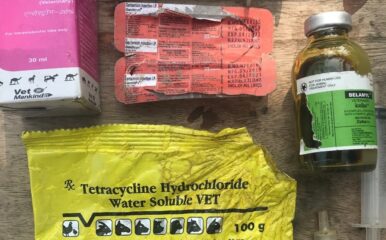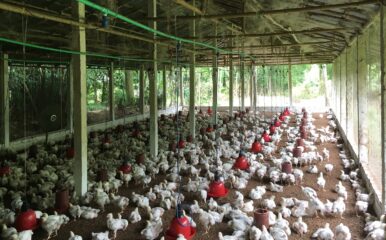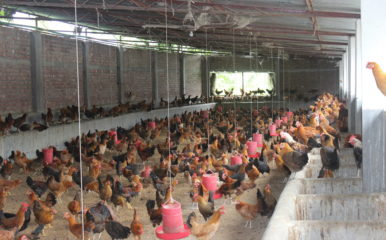
Fieldwork in Quang Ninh during the COVID-19 pandemic
Published on 25/10/2021
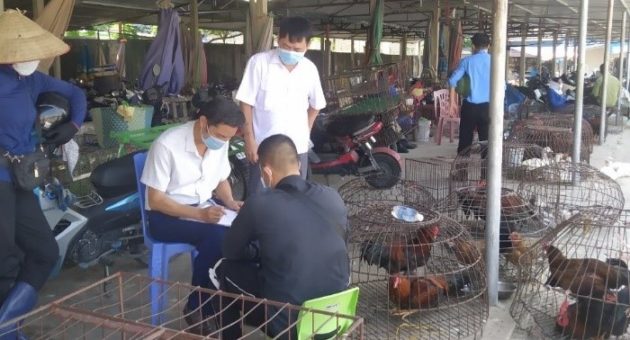
NIAS, Vietnam
View this page in:
VietnameseLivestock production in Vietnam still faces many difficulties as a result of unpredictable developments from COVID-19. The number of cumulative cases up to 14 October 2021 was 849,691. On 13 October 2021, there were still 3,461 new infections. Quang Ninh, a coastal province in the northeast of the country where we are carrying out our fieldwork, has had no new cases for more than 100 days. Yet COVID is still adversely affecting livestock development here.
Tourism services including restaurants and hotels are closed or limited, so the consumption of poultry meat has fallen by 30-50%, and the delivery of poultry products is very difficult. The transportation of feed, poultry breeds and products between regions is also difficult.
Feed cost increased (30% compared to pre-epidemic) because of the stagnation of imported raw materials and higher transportation and logistics costs, while poultry prices decreased, albeit only slightly, from 60,000 VND/kg to 55,000 VND/kg.
COVID-19 controls
Our team at the National Institute of Animal Science (NIAS) went to Quang Ninh and interviewed chicken vendors for six days as part of our link tracing studies which aim to define our sampling frame by tracing movements of chickens along the poultry production and distribution networks. Despite the COVID situation in Quang Ninh being checked, the control of people entering and leaving the province is still being strictly implemented.
Our investigators all had two doses of Covid vaccine and negative results from PCR testing, but we still had to make detailed medical declarations and wait three hours at the province’s check point to complete entrance procedures.
Poultry survey
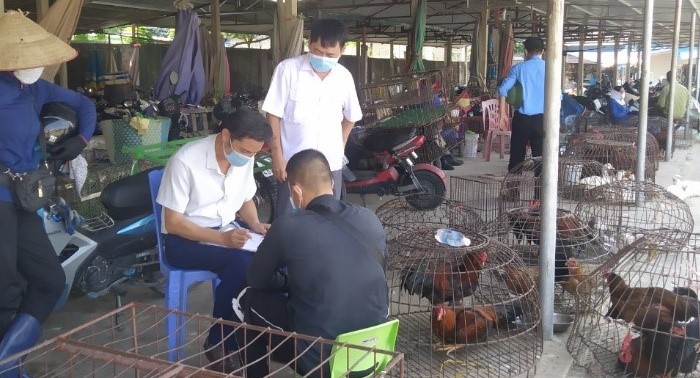
Quang Ninh province has around 3.9 million birds, mainly hybrid/colored chickens, with the poultry population meeting 60% of the province’s demand. The rest must be imported from other provinces.
Poultry is mainly slaughtered at small slaughterhouses (strictly controlled by the provincial animal health department) and then poultry meat is delivered to industrial zones, restaurants, hotels and schools in the province. Currently, there is no industrial poultry slaughterhouse in the province.
In our survey, we found live poultry is sold in markets, with some slaughtered on-site, mainly to supply consumers. A small proportion (10%) is supplied to restaurants and hotels.
Some chicken vendors said that before Covid , 50% of their chicken was sold to restaurants, hotels and schools, but following the pandemic customers decreased. Each market has only between five and 10 people selling live poultry, with each poultry vendor selling some 10-20 birds a day.
Poultry is imported mainly through traders from Bac Giang province. A small number of poultry farms in Quang Ninh also supply to poultry vendors at the market. Live chickens at the markets are concentrated in a dedicated area which has a water supply and must be cleaned daily and disinfected weekly. No sick or dead birds were found in the live-poultry selling area.
Food safety
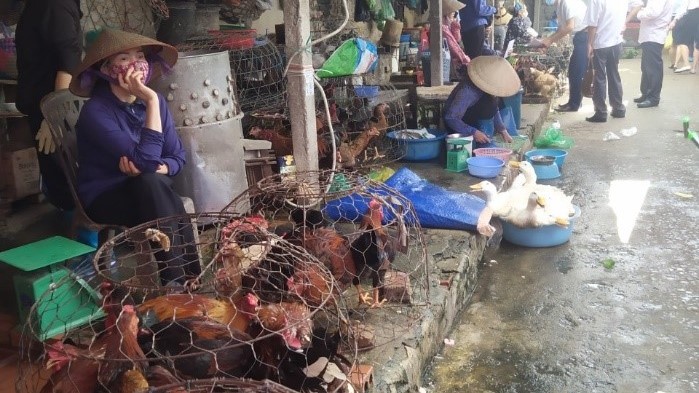
We recognise that trading live poultry at market has many potential risks in terms of disease and food safety – and it is very difficult to control diseases and disease residues in live poultry, and to strictly control the hygiene of poultry slaughtering at the market.
However, Vietnamese consumers still prefer ‘hot’ poultry meat (recently slaughtered poultry, having undergone no chilled storage), and do not like chilled or frozen products. It is difficult to stop the sale of live birds and poultry slaughtering in markets.
Live vs frozen poultry
In addition, if vendors are slaughtering only a small number of birds, as at present, poultry sellers prefer not to use a concentrated slaughtering facility outside the market or a slaughterhouse because of the distances, and so time and costs, involved. When poultry vendors slaughter larger numbers of birds, those dressed poultry not sold within a day have to be frozen – and vendors then face the difficulties of selling frozen poultry the next day.
The slaughter of poultry needs to be studied further. It is possible that the construction of small slaughterhouses that both ensure hygiene and safety and are convenient for daily consumers will be important in the future – and that industrial slaughterhouses also need to be built to serve the supply of restaurants, hotels, industrial zones and schools.
Getting it right is important, for the health of poultry and people in Vietnam, the livelihoods of poultry producers and vendors in Quang Ninh, and the economic development of this province.
Risk points
The One Heath Poultry Hub has worked in Vietnam since 2019 with the aim of identifying risky points in poultry production and distribution networks and indicating the links between human behaviour, socioeconomic and cultural contexts, and disease process. These research findings, which will include those from Quang Ninh, will contribute to developing critical novel interventions and policies for the control of diseases that pass from animals to people, such as avian influenza.
As we undertake our research through COVID restrictions, the importance of such work is made even more stark to us.

